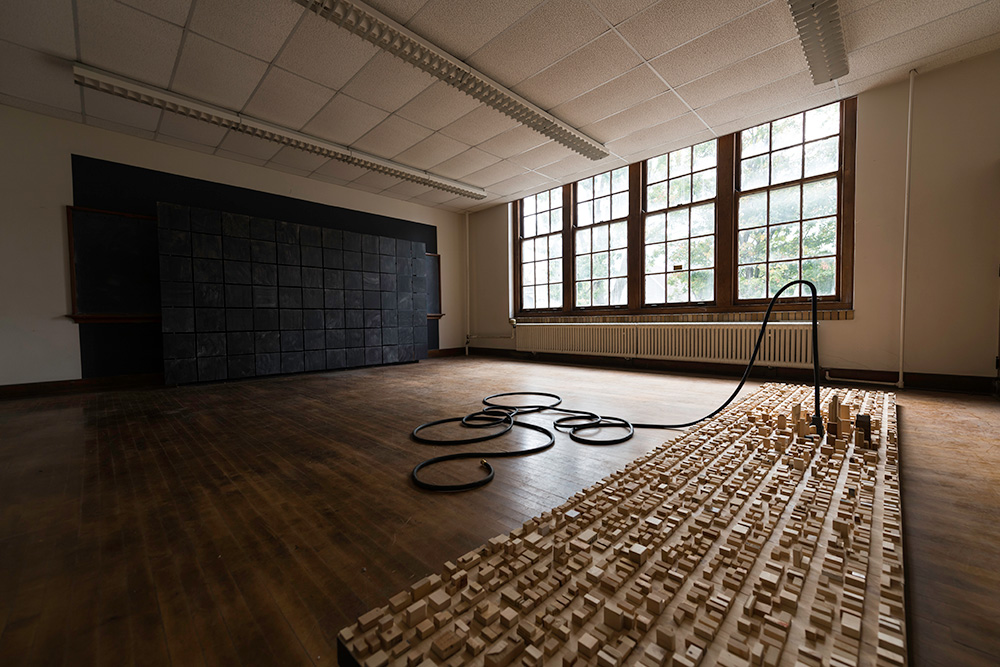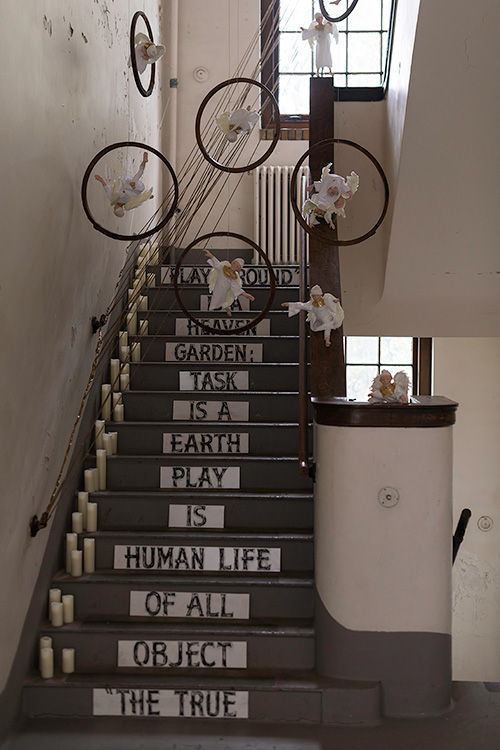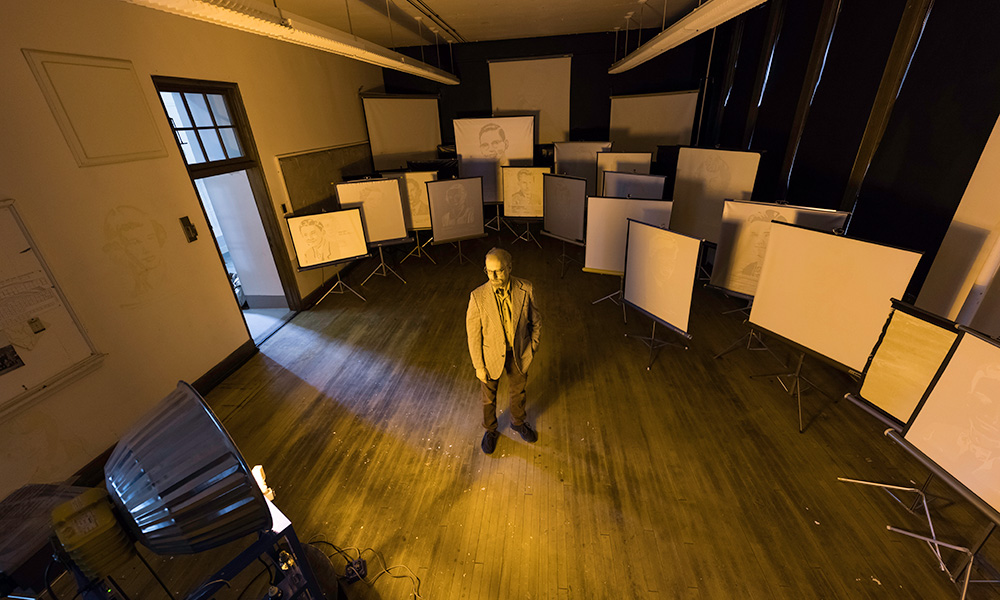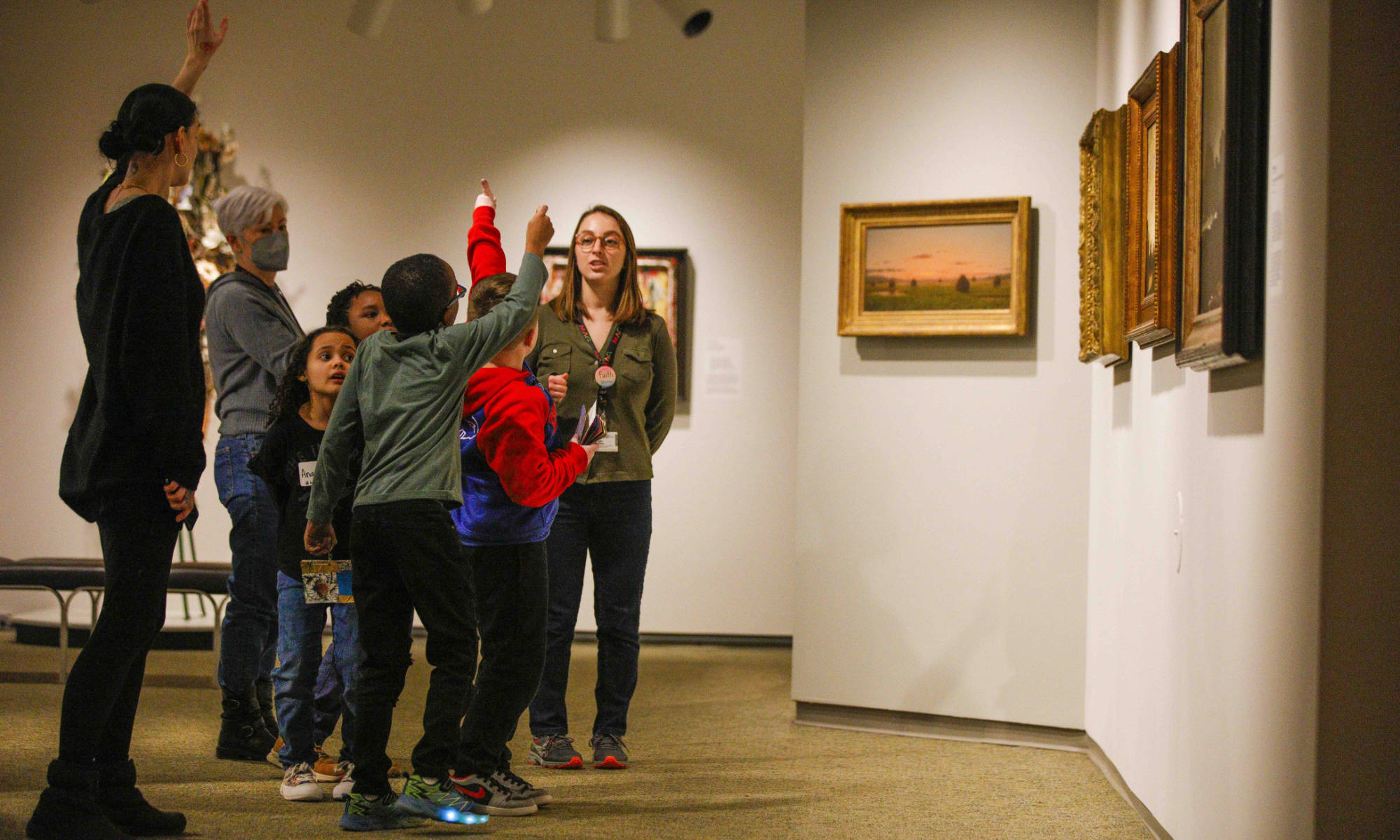Memory holds a central place in the human experience, in many ways even defining identity. The fleetingness and permanence of memory inspired a recent collaborative art project at the former Medina High School, in Medina, New York.
The large, Victorian-era building hasn’t been used as a school in many years. Its empty rooms and halls this fall became fertile ground for artists from Toronto, New York, and places in between. Named “PLAY/GROUND” by the curators, the immersive art project offered 29 original art installations in classrooms, hallways, stairwells, the gymnasium, and the auditorium. Each piece was created on site in less than a week; in a gesture toward ephemerality, the project was on view for only one weekend before being dismantled.
Allen Topolski, an associate professor of art at the University of Rochester, made the piece “A Common Inculcation.” The act of remembering has long shaped his work, and he drew from Medina’s 1950 high school yearbook to produce an elaborate display of projections, screens, and portraits.
Yearbooks, he says, are a kind of index to a “pivotal moment in most people’s lives,” and he calls his piece an exploration of the “gray area” between memory and nostalgia.
Read more
 Committed to memory
Committed to memory
“I mostly come to memory through objects, which I see as remnant, component, evidence, keepsake, memento, document, heirloom, or souvenir—and I enjoy the investigation of the subtle differences between them.” Allen Topolski joins other Rochester artists and scientists to answer the question: How does memory shape our sense of who we are?
In photos: More from “PLAY/GROUND”
(University of Rochester photos / J. Adam Fenster)










